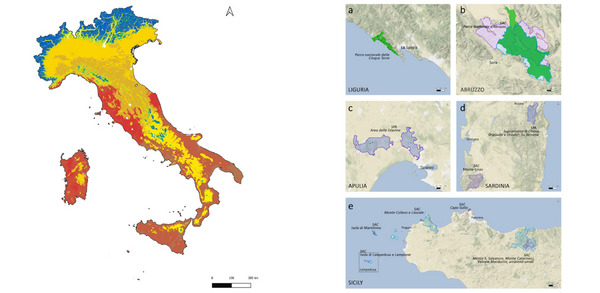Crop Wild Relatives (CWR) are wild plant taxa genetically close to a crop. Being a precious source of genetic variability and of traits for crop improvement, CWR have a high socio-economic value and are identified among the main plant genetic resources. It has been estimated that, since 1945, around 30% of crop yield improvement derived from the use of CWR in breeding, which corresponds to a value of around US $100 billion worldwide. Alarming enough, their inter- and intraspecific diversity, as well as their habitat diversity, are under threat of irremediable loss.
CWR conservation in their natural habitat (i.e. in situ conservation) inside protected areas appears to be the most effective protection strategy for these wild taxa. Indeed, this approach allows populations to continue to evolve, favouring their adaptation to the changing climate and environmental conditions, which is especially relevant in the current climate change scenario.
In a previous study, UNIPG focused their interest on the protection of CWR diversity in Italy. The analysis of the taxa distribution and of different pedo-climatic conditions, and the application of the complementarity approach, resulted in the identification of the most suitable areas for the institution of genetic reserves for the active protection of multiple CWR taxa of the key genera Allium, Brassica and Triticum (Figure 1).
In the PRO-WILD project, the research is expanded to the whole European territory and the CWR taxa belonging to the key genera. including Aegilops, Beta, Brassica and Triticum. Considering that Europe is rich in diversity, such information is urgently needed for fruitful active protection of CWR diversity across the region and to facilitate its use in plant breeding, to successfully face current global food challenges. This is relevant also considering the global value of many of the crops related to the wild taxa target of this investigation, such as different wheat species, beets, cabbages, rape, and onion.
Contact
Dr Lorenzo Raggi
University of Perugia UNIPG
Borgo XX Giugno, 74. 06121 Perugia, Italy
lorenzo.raggi(at)unipg.it

 tap and then scroll down to the Add to Home Screen command.
tap and then scroll down to the Add to Home Screen command.